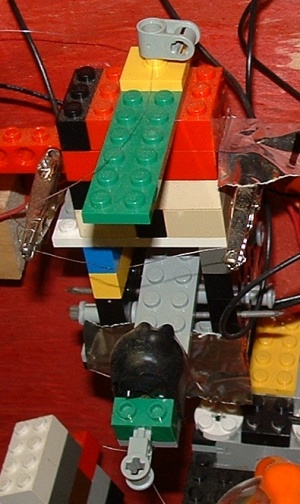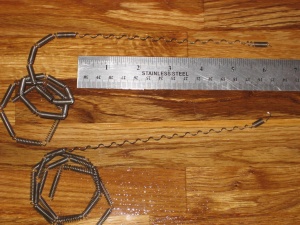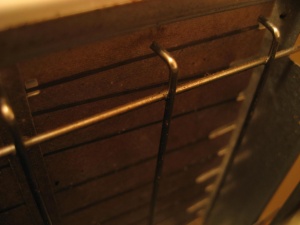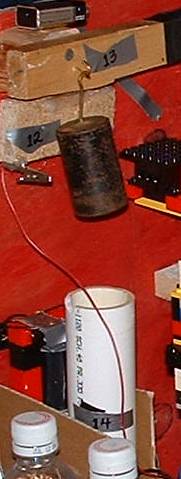Nichrome wire
Description
| Nichrome is metal that is usually formed into either wire or a thin strip. It is a resistive heater, meaning that when power is passed through it, the wire heats up. By hooking a circuit with nichrome wire up to a battery, heat can be quickly generated to affect bimetallic strips, melt fishing line, burn string, light candles/matches, and other possible applications. |
Acquisition
Nichrome wire is easily obtained from appliances you have in your house, appliances from thrift stores, and online. Appliances can contain multiple gauges and may have something less like a wire and more like a ribbon (perhaps more appropriately termed heat tape, but usage is similar and both will be addressed as wire). Online stores usually offer spools of a single gauge of wire and may mark it as foam cutting wire. You could also buy heat tape and take it apart, but this is more expensive.
Hair Dryers
Toasters
Buying Online
A number of hobby stores sell Nichrome wire. It is often sold as foam cutting wire.
Using
The use of nichrome wire has a few challenges associated with it.
- Nichrome wire gets hot
- You can't have it in direct contact with anything that will burn or melt unless that's your intent. Use fixed alligator clips to hold it or some other metal clamping method.
- If the wire is left on too long, is provided with too much power for the length of wire in use, or both, the wire will break and you will have to replace it.
- Nichrome wire draws a lot of power
- If you are not using several batteries in parallel (or a large battery), the nichrome probably just won't work. You need to either provide it with more power or use a shorter wire length.
- If left on, this power draw will quickly drain your batteries. If you need to start the machine with the nichrome already powered, make sure to only turn it on directly prior to initiating the run. The best policy is to have a transfer turn the nichrome on either as one of the last transfers, or have one of the trasfers immediately following it turn the nichrome back off.
Setups



















